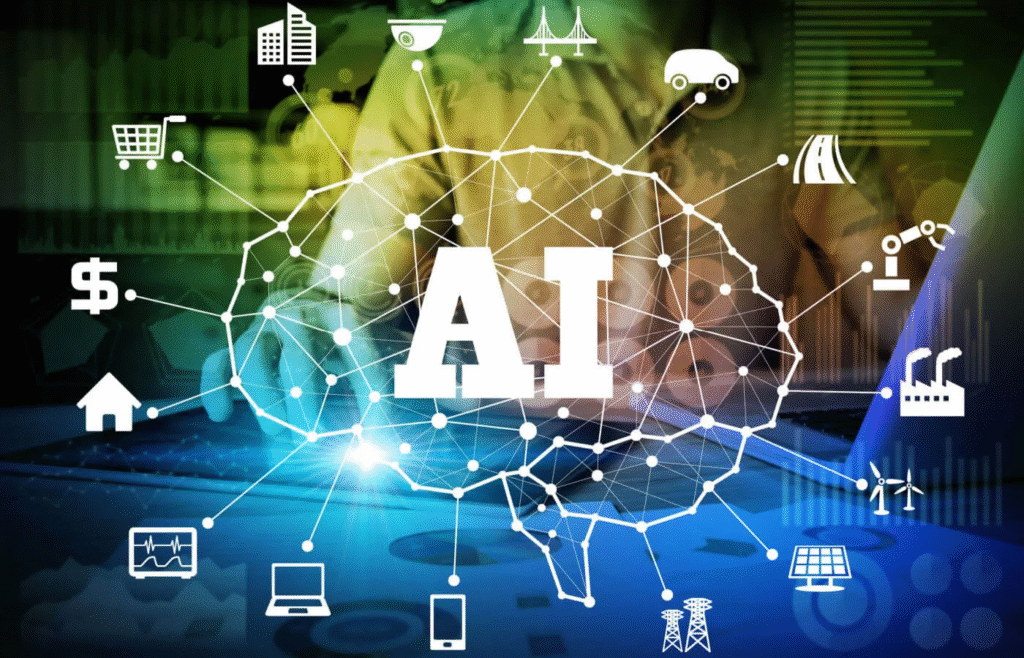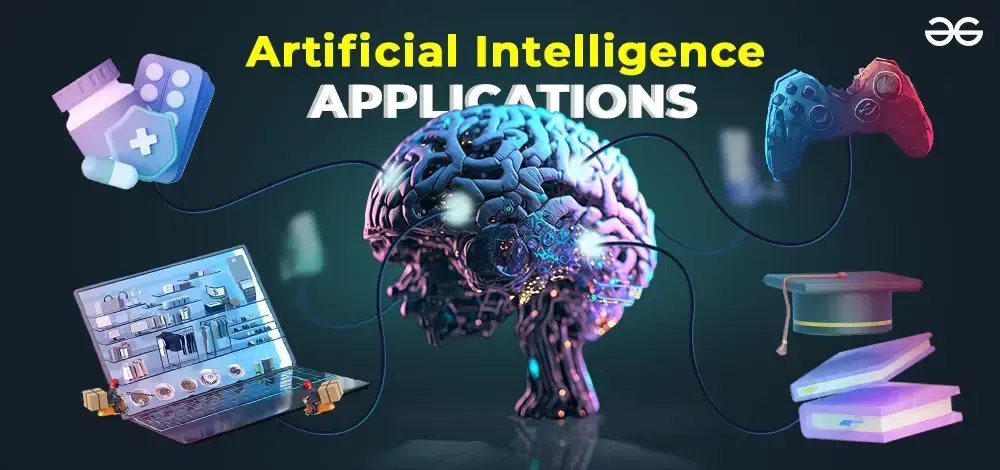Artificial Intelligence (AI) has rapidly shifted from niche technology to omnipresent force in American life. By 2025, AI is seamlessly woven into homes, workplaces, healthcare, education, entertainment, and even parenting. This national transformation mirrors the scale of past revolutions—yet its pace and depth feel unprecedented. Below, we explore the ways AI now reprograms daily routines, social habits, and human potential.
1. 🏠 AI in the Home: Smart, Safe, and Personalized
Natural Language Home Automation
Platforms like Samsung SmartThings now support natural language routines, allowing users to effortlessly automate tasks—“turn off lights when I leave”—without manual rule programming. These updates empower users across devices and operating systems, expanding access to intuitive home control
Intelligent Energy & Security
Smart thermostats like Nest adapt heating/cooling based on behavior patterns, weather forecasts, and personal preferences. AI-enhanced surveillance systems (e.g., Yale smart cameras) detect unusual behavior, suppress false alarms, and even notify users when a package arrives
Smart refrigerators now scan contents, auto-generate shopping lists, and suggest meal plans. These systems meaningfully reduce waste and promote healthier eating
2. 🧬 Health & Wellness: Timely, Personalized, Preventive
Wearable Monitoring & Telehealth
Advanced wearables (Apple Watch, Fitbit) continuously gather data—heart rate, sleep, activity. AI analyzes this to detect irregularities such as atrial fibrillation, prompting users or doctors to intervene early Remote Patient Monitoring platforms now incorporate AI to track chronic conditions and rapidly identify deteriorations
AI-Powered Medical Services
Virtual doctor chatbots triage symptoms, book appointments, and refill prescriptions. Clinical platforms like IBM Watson Health analyze imaging and records to guide treatment plans—streamlining diagnostics and reducing misdiagnoses by up to 30%
Voice Agents for Clinician Tasks & Companionship
Healthcare providers use voice assistants (such as Cencora’s “Eva”) to automate insurance communications—replacing ~100 employees. Emotional-care chatbots like Everfriends support seniors and individuals with dementia, providing tailored conversation and empathetic responses
3. 🏫 Education & Parenting: Personalized, Efficient, Empowering
Adaptive Learning & Tutoring
AI platforms like Khan Academy and Carnegie Learning customize instruction to individual students, improving engagement and retention. Over 67% of schools in developed nations adopt AI-augmented instruction
Parents also integrate AI into homeschooling. As one father explained, tools have helped his children repair things around the farm and design video games—turning AI into a collaborative learning mode .
Efficiency Gains in Administration
Generative AI streamlines administrative work—automating tasks like meeting summaries, assignment grading, and scheduling. Studies report a 66% productivity boost from AI-assisted work .

4. 🛒 Everyday Commerce: Smart, Seamless, Secure
Personalized Shopping & Fraud Protection
AI drives ecommerce by tailoring product recommendations and offering AR “virtual try-ons.” Chatbots manage customer queries 24/7
Financial apps like Mint, YNAB, Betterment, and robo-advisors such as Wealthfront leverage AI to analyze spending, optimize budgeting, detect fraud, and support investment planning
5. 🚘 Transportation & Mobility: Smart, Connected, Autonomous
Navigation & Ride Sharing
AI-enhanced apps like Google Maps and Waze now predict traffic patterns with real-time data, saving time and fuel. As Sundar Pichai states, commuting has turned into a science
Ride-sharing services use AI to optimize route dispatch and pricing, while detecting unsafe driver behavior Tesla and Waymo’s self-driving systems are expanding autopilot capabilities, but full autonomy remains in development .
Safer Roads
AI-powered car safety features—lane assist, auto braking, driver fatigue detection—are making cars intelligent co-pilots .
In cities, AI-managed traffic lights and safety systems improve flow and reduce congestion
6. 📺 Media & Entertainment: Curated and Creative
Personalized Content
Streaming platforms rely on AI to tailor recommendations—Netflix credits 75% of its viewing to such systems. Spotify’s “Discover Weekly” and personalized playlists use AI to craft mood- and style-based songs .
AI-Generated Content
Generative AI tools (Jasper, DALL·E, ChatGPT) assist in creating articles, art, music, and video scripts—empowering creators with speed and creativity
7. 🏥 Banking & Fraud Prevention: Secure and Smart
AI systems detect fraudulent financial activity by analyzing patterns in real-time—saving banks billions annually
Customer service chatbots at major firms handle user inquiries quickly, improving user experience and freeing staff for complex issues .
8. ⚖️ Ethics, Fear, & Future: Jobs, Privacy, and Regulation
Workforce Disruption
OpenAI’s Sam Altman warns that AI could threaten millions of jobs across white-collar and blue-collar sectors, mirroring the transformative scale of the Industrial Revolution. While AI also creates new roles, reskilling is essential
Privacy & Bias
AI systems rely on personal data, prompting concerns about who controls user information and how algorithms make decisions. Biases in data can perpetuate unfair outcomes—calling for robust governance and transparency .
Emotional/Moral Frontiers
From mental health chatbots to self-driving car accidents (explored in Bruce Holsinger’s novel Culpability), AI raises tough questions about responsibility and emotional authenticity
9. 🧭 Toward an AI-Augmented Society
- Collaboration over replacement: AI is best when amplifying human potential, not supplanting it.
- Reskilling is essential: Public-private/education partnerships need to address shifting job requirements.
- Ethical safeguards: Transparent regulation, data privacy frameworks, and bias mitigation are non-negotiable.
- Accessibility: Seniors and underserved communities must benefit from AI progress.
- Human-centric design: AI must enhance—not erode—human connection and decision-making.
🔮 Final Thoughts
AI is no longer a distant prospect—it’s deeply embedded in everyday American life. It drives convenience, safety, creativity, and wellbeing. From voices in the home and cars with wheels to virtual doctors and robo-tutors, AI offers immense potential—but also ethical complexity.
As AI continues to evolve, the challenge will be ensuring it serves all of society equitably, augmenting our abilities rather than constraining them. Guardrails matter: fairness, privacy, transparency, and reskilling must guide progress.
If we manage this balance, AI’s integration into daily life can usher in an era defined by smarter living, resilient communities, and purpose-driven human-machine collaboration. One thing is certain: the AI revolution is already here—and it’s reprogramming the human experience in real time.

